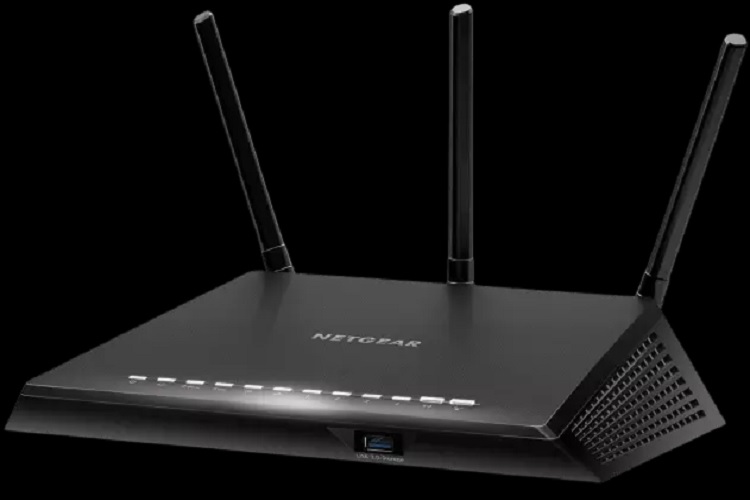Glossy vs Matte Screen – Which One Should I Pick?
Screens of all persuasions, from large TVs through monitors to smartphones, employ either matter or glossy materials. Pros and cons exist for each variety as with everything in life, but in the case of monitors, we have to tell you right off the bat that we wholeheartedly recommend matte screens. You’ll be hard pressed to find glossy monitors, and there’s a good reason for that. Glossy coating materials often cause eye strain due to glare and reflections, while matte materials maintain a more pleasant experience. But still, let’s delve into the topic.
Glossy Vs Matte Screen
When shopping for a new PC monitor or laptop, the type of screen coating matters a lot. Aside from the influence of the screen surface on image quality, ambient lighting is also an important issue to consider.

Glossy screen coatings allow for more vibrant colors and dramatic contrast, but they can become mirror-like and unappealing to use when exposed to direct sunlight or intense ambient lighting.
The anti-glare treatment on the matte finish monitors, on the other hand, eliminates the problem of reflections. But the clarity of the image is less clear and grainy.Matte-coated monitors are also better for your eyes because you don’t have to look through reflections as you do with glossy screens.
Glossy Screens
A glossy screen has a significantly smoother outer polarising layer than a matte screen, which has a rough surface. This smooth surface, rather than dispersing ambient light, tends to reflect it back fairly directly, generating undesirable reflections and glare – especially in intense direct light. The light emitted by the monitor, on the other hand, is unaffected by powerful diffusion processes. Aside from reflections, the image seems more bright, richer, and pure. Anti-reflective (AR) chemical coatings, such as magnesium fluoride or specific polymers, are commonly used on modern glossy polarising films to help absorb some of the ambient light.In what is known as an ‘Ultra Clear Panel,’ some of Samsung’s glossy models feature silver nanoparticles interwoven into their screen surfaces. This is intended to help the absorption of certain ambient light to a little larger extent than a typical anti-reflective chemical coating while not compromising image quality.
Matte Screens
A matte screen surface is made up of an exterior “polarising layer” that has been coarsened by mechanical and chemical means. Multi-layered ‘spluttering’ or many passes of ‘dip-coating,’ optionally followed by chemical surface treatments, are popular means of producing this surface.Although it is not required to investigate the complexities of these coating procedures, we shall analyze the desired end result. This is done to generate a matte finish on the screen surface, which diffuses ambient light rather than flashing it directly back to the user, as a smooth surface would.
Anti-glare is a word that has become synonymous with such a screen due to the significant decrease of undesired reflection and glare. Although ambient light diffusing and hence glare reduction is desirable, it is not a foolproof solution.The optical qualities of the surface work in both directions, affecting light emitted from the display as well. Furthermore, interference exists between the produced light and the dispersed incident light. The graphic below depicts the route of both emitted (from the screen) and atmosphere (from the environment) light as well as their interaction with the matte screen surface.
While the dispersion of external light achieves the desired decrease in glare, the picture generated by the monitor is also influenced by the same diffusion process. The diffused ambient light additionally exacerbates the process by interfering somewhat with the image generated by the monitor.
How Are Matte Screens Different From Glossy Screens?
The fundamental difference between a matte and a glossy screen is that the former has an anti-glare coating. Its “matte” appearance decreases the glare caused by light reflection. Matte displays, on the other hand, do not have any extra material between the LCD panel and the surface, contrary to common belief.
Here’s the deal: Even while matte appears to be a recent creation, it isn’t. It only appears to be such. Matte screens, on the other hand, simply eliminate the additional material utilized in glossy panels. Glossy screens, in case you didn’t know, feature an additional panel in front of the LCD. The anti-reflective coating on this additional panel is intended to soften the reflection.The texture of the screen is substantially different, save from the presence of an extra panel. The matte screen, rather than having a squeaky-clean surface, seems rather smooth. It’s simple to run your fingers through. All of this is fine, but matte displays have their own set of drawbacks.The anti-glare function comes at a cost. A matte screen is duller, and it doesn’t always appear to be as bright as a glossy screen. It’s like a grainier, more muted version of the original. The matte screen is obviously not for you if you prefer high-definition screens.
Is it still worthwhile to invest in a matte screen, then? Is it still the case that glossy displays are the superior option? If you’re having trouble deciding, consider the following points.
Factors to Consider When Choosing a Glossy vs Matte Screen
Where Will You Use It?
The first thing to think about is where you’ll put it. If you want to use your laptop outside most of the time, a matte screen is a better choice. You don’t want to be constantly adjusting to the reflection. It also damages the eyes.A glossy screen, on the other hand, is a choice if you will constantly use it in controlled situations with little sunshine. Since glare is the primary reason for avoiding utilising a glossy screen, removing the source of glare should solve the problem, right?If you’re intending to use the laptop indoors in a well-lit environment, the possibilities of glare reflecting on the screen are slim.
What Will You Use It For?
The second factor to consider is why you’re buying the screen/laptop/phone in the first place. Are you intending to utilise it for administrative tasks, gaming, or artistic endeavors?
If you simply plan to use it for emails or making notes, books, and the like, a glossy screen is usually not an issue as long as you stay in a controlled setting. Even a matte display will suffice because you won’t need a high-definition screen if you’re only checking your email.If you’d like to play games, the visuals must be your first priority. After all, a high-definition screen allows you to see things more clearly. A glossy screen would be preferable in this instance. You just must play indoors or away from natural light, since glare from your screen would be expected.
The arts, on the other hand, are the polar opposite. While some say that having a bright, high-contrast rendition of your artwork is preferable, this is not always the case.Glossy displays, in fact, can artificially enhance colour, giving the impression that it is already bright. And when you put them on a matte screen, you discover they’re not quite as brilliant.A matte screen is recommended by most artists so that you can see the actual contrast and colour of your artwork.
Individual Preferences
Finally, there’s a matter of personal taste. Even if all the advantages and disadvantages are brought forth, your choice will always win. Even although a matte screen is supposed to be better at presenting the true colours of your artwork, if you’re an artist who enjoys a bright screen, a matte screen won’t be on your list.Some individuals like a matte screen, while others prefer the “glossiness” of a screen. In the end, everything comes down to personal choice.
The Advantages And Disadvantages Of Glossy And Matte Displays
In general, the IT world has debated whether a display or screen is superior for a long time.
While reflections and glare can create visual distortions, glossy displays have been observed to display pictures more clearly and colours like black to be deeper and more saturated, whereas matte displays tend to water down colours and make pictures fuzzy at times.While matte displays are superior for things like gaming or office usage, glossy displays may be highly useful for things like graphic design or photography that need visual clarity when used in a controlled setting and properly lighted.
Furthermore, matte displays have been observed to attract less fingerprints than glossy screens.
Conclusion
Glossy displays, despite providing pictures of higher quality, colors, and clarity, appear to be made useless in any light situation less than ideal and are big fingerprint magnets, whereas matte panels battle the same concerns but can compensate by giving lower picture quality.
In an ideal world, there would be a matte screen that is free of glare and shine, has excellent image quality and color accuracy, and isn’t a fingerprint magnet; perhaps one day we will have such a screen, but until then, we can only choose the best choice for our unique needs.The truth is that no one but themselves can prescribe the ideal monitor, but it’s comforting to know that there are and will always be choices and answers to any problems along the route.
Whether glossy or matte, consumers should choose the monitor that best meets their needs and does not compromise on convenience of use, user experience, or health.



![How To Use Your Laptop As A Monitor [Ultmiate Solution for Beginners]](https://www.bestproducthunt.com/wp-content/uploads/2022/07/How-To-Use-Your-Laptop-As-A-Monitor-Ultmiate-Solution-for-Beginners-1.jpg)

